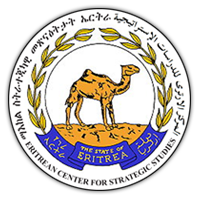December 11, 2021
What do we know about the one million year old Eritrean Homo Sapiens?

Fig. 1&2. The nearly complete Homo cranium from Uadi Aalad (UA), Buia
By Dr. Tsegai Medin
The Geo-paleo-anthropo-archaeological research conducted in the Eritrean Danakil depression in the last two decades has resulted in the discovery of over 200 Late Early Pleistocene sites within 1000 meter thick fluvio-lacustrine sedimentary successions. Buia and Mulhuli- Amo are among the most well-known fossiliferous Late Early Pleistocene sites in the world. They are enriched by evidence of Homo fossils, macro and micro mammals and advanced lithic technological complexes. The nearly complete Homo cranium was discovered in the mid 1990`s at the inhospitable area of Uadi Aalad (Buia basin). Other evidences of Homo were found near the cranium (all are probably belong to the same individual), these include: a two permanent upper incisors, two conjoined pelvic fragments, a right iliac blade, a right acetabulum and partial ischium, forming an incomplete adult hip bone and a pubic symphysis. Due to their metrical features, these fossils are attributed to an adult….



